Awash in autumn color, the Shinto capital offers a bounty of blessings.
by Linda Watanabe McFerrin
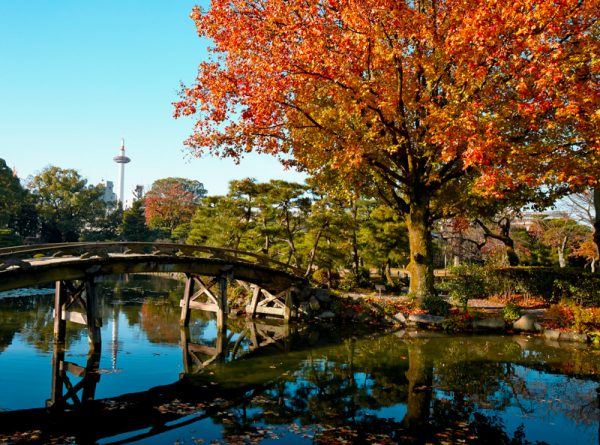
Lovers of fast-paced Tokyo, like myself, can find it hard to part from that fabulously frenetic city, but for traditionalists or those visiting Japan for the first time, the destination of their dreams is likely to be Kyoto. With good reason: The grace and beauty of Japan’s old southern capital still has the power to sweep visitors off their feet.
First stop, Japan’s famous Shinto shrines
What more auspicious place to begin that journey than Fushimi Inari Taisha? It’s almost impossible to pass beneath the mystical torii gates without feeling at one with the ineffable.
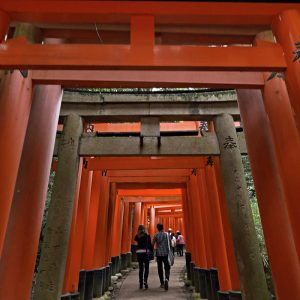 Established in 711 at the top of Inariyama or Inari Hill in Kyoto’s southern Fushimi-ku, this Shinto shrine is known for its dazzling walkway of one thousand torii gates dedicated to Inari, god of rice and—by association—of prosperity. Today the main gate and shrine are at the bottom of the hill and a path leads upward through the line of vermillion thresholds.
Established in 711 at the top of Inariyama or Inari Hill in Kyoto’s southern Fushimi-ku, this Shinto shrine is known for its dazzling walkway of one thousand torii gates dedicated to Inari, god of rice and—by association—of prosperity. Today the main gate and shrine are at the bottom of the hill and a path leads upward through the line of vermillion thresholds.
Stone foxes (kitsune), messengers from the gods according to lore, seem to gaze down from their pedestals, bestowing secret warnings, blessings and symbolic gifts.
With sweet shops, leafy glades, quiet trails and climbs and numerous sites for worship and meditation, it’s no wonder this little paradise located just outside the JR Nara Line Station and a short ride or walk from other public transport draws millions of visitors during holidays. It’s always busy, but on most days the crowds will seem to melt magically away.
Sake spirits
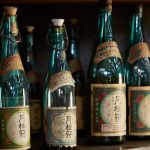
Not far from Fushimi Inari Taisha another form of spirits await: sake. Japan’s ubiquitous rice wine is the perfect way to slake both your spiritual or material thirsts. The Gekkeikan Okura Sake Museum, offers up sake history, memorabilia and a very thorough look at rice wine production. Housed in pristine quarters next to an old sake brewery built in 1909, it is run by one of Japan’s premier sake companies. Consumed in Shinto purification rituals, sakes are often served to the gods before being consumed in offerings called o-miki or miki.
Like other libations, these offerings are made in supplication, usually for a rich harvest. At the close of your visit, museum staff invites you to toast whatever deities preside over your personal adventures with an uplifting sample of some of Gekkeikan Sake Company, Ltd.’s popular products.
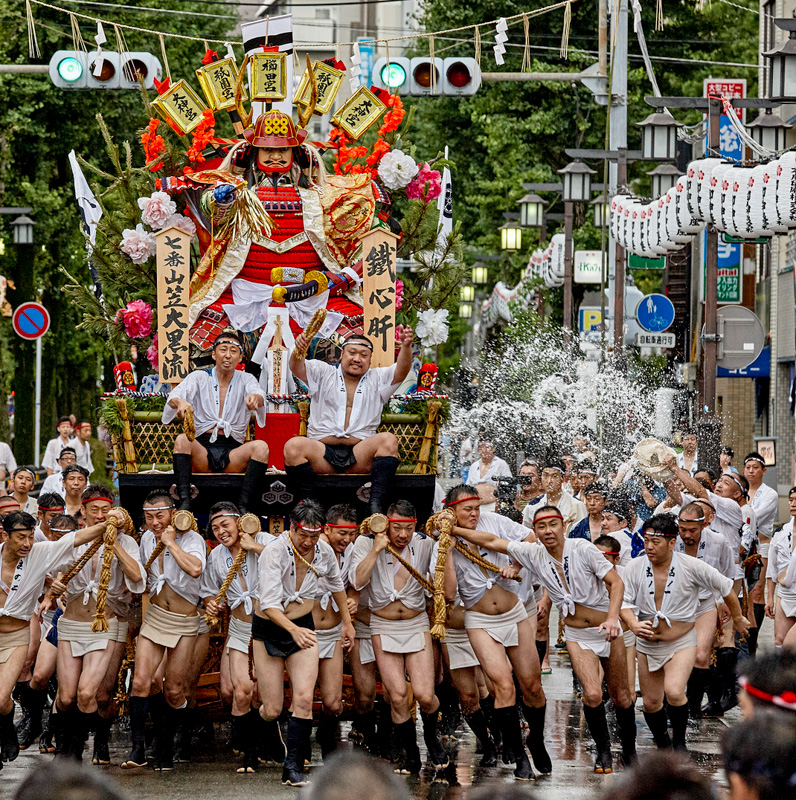
Perfect respites
Once you have been fully refreshed by Gekkeikan’s “Tama no Izumi” or “Jewel of the Fountain” it’s time to leave Fushimi-ku and head for Kyoto’s dazzling Higashiyama-ku. There is no better way to explore the divine than wandering the imposing Kyoto National Museum, one of Japan’s most prestigious repositories of pre-modern Japanese works of art. Some of the greatest treasures of Japan’s shrines, temples and the Imperial Household are beautifully exhibited here in massive tomb-quiet chambers. It is a monumentally transcendent experience in every sense.
Almost next door, the graceful Hyatt Regency Kyoto provides a welcome respite from anyone’s mystical meanderings. Whether you are stopping by or checking in, try to settle here for a little while. Besides being beautiful, this hotel showcases a comfortably contemporary take on Old World courtesy and refinement. From kaiseki-style delicacies to washi paper and kimono silk décor this is the place to sample traditional fare with a western flare in dining, entertainment and design.
Of course if you aim to drift further into Kyoto’s “Floating World,” the upscale and deliciously “antique” neighborhood on the banks of the teahouse and restaurant-lined Kamogawa or Kamo River is the perfect place to do this.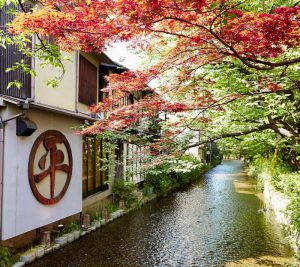 Here elegantly refurbished merchant and craftsmen homes offer a dreamy alternative to modern living.
Here elegantly refurbished merchant and craftsmen homes offer a dreamy alternative to modern living.
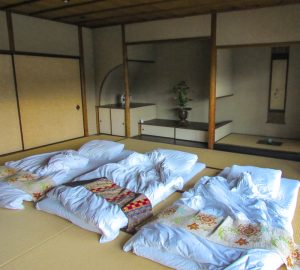 In the quiet, wood-rich interiors of these architectural gems, you can sleep on beautiful silk futons atop spotless tatami mats (leave those shoes at the front door!) and imagine yourself carried off to Heian times. Staying in Higashiyama-ku? Quickly stash your baggage and head off on a temple and shrine tour. Sanjusangen-do, which features over a thousand images of Kannon, the Buddhist goddess of mercy, is a must, as are Kennin-ji, a Zen Buddhist temple and Yasaka-jinja, once called Gion Shrine.
In the quiet, wood-rich interiors of these architectural gems, you can sleep on beautiful silk futons atop spotless tatami mats (leave those shoes at the front door!) and imagine yourself carried off to Heian times. Staying in Higashiyama-ku? Quickly stash your baggage and head off on a temple and shrine tour. Sanjusangen-do, which features over a thousand images of Kannon, the Buddhist goddess of mercy, is a must, as are Kennin-ji, a Zen Buddhist temple and Yasaka-jinja, once called Gion Shrine.
 If the incense, the prayers, the offerings and the benefactions don’t carry you away completely, you will be more than ready by day’s end for a tour of old Gion, home of Kyoto’s famous Geiko (Geisha) and Maiko culture. You’ll need a guide here, too. The narrow streets of this neighborhood are hard to navigate, but they are the perfect close to an otherworldly tour. If you are lucky, you will encounter a Geiko or Maiko on her way to an appointment.
If the incense, the prayers, the offerings and the benefactions don’t carry you away completely, you will be more than ready by day’s end for a tour of old Gion, home of Kyoto’s famous Geiko (Geisha) and Maiko culture. You’ll need a guide here, too. The narrow streets of this neighborhood are hard to navigate, but they are the perfect close to an otherworldly tour. If you are lucky, you will encounter a Geiko or Maiko on her way to an appointment.
Then stop in for a late night bite and the camaraderie and laughter that often come in the liminal space between waking and dreaming, between what we see and what we can imagine.
Linda Watanabe McFerrin is a poet, travel writer and novelist. She often writes about Japan, where she lived for many years. Her latest book project is the forthcoming Wandering in Japan.

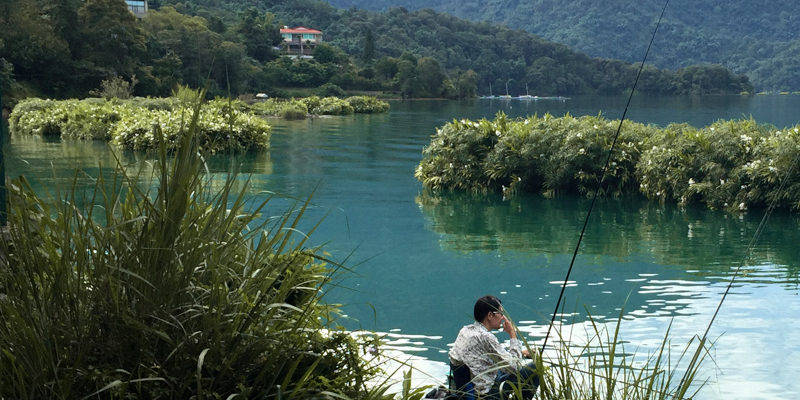


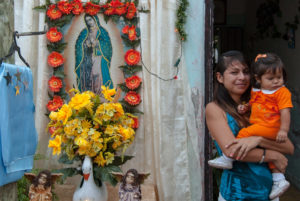

Leave a Reply